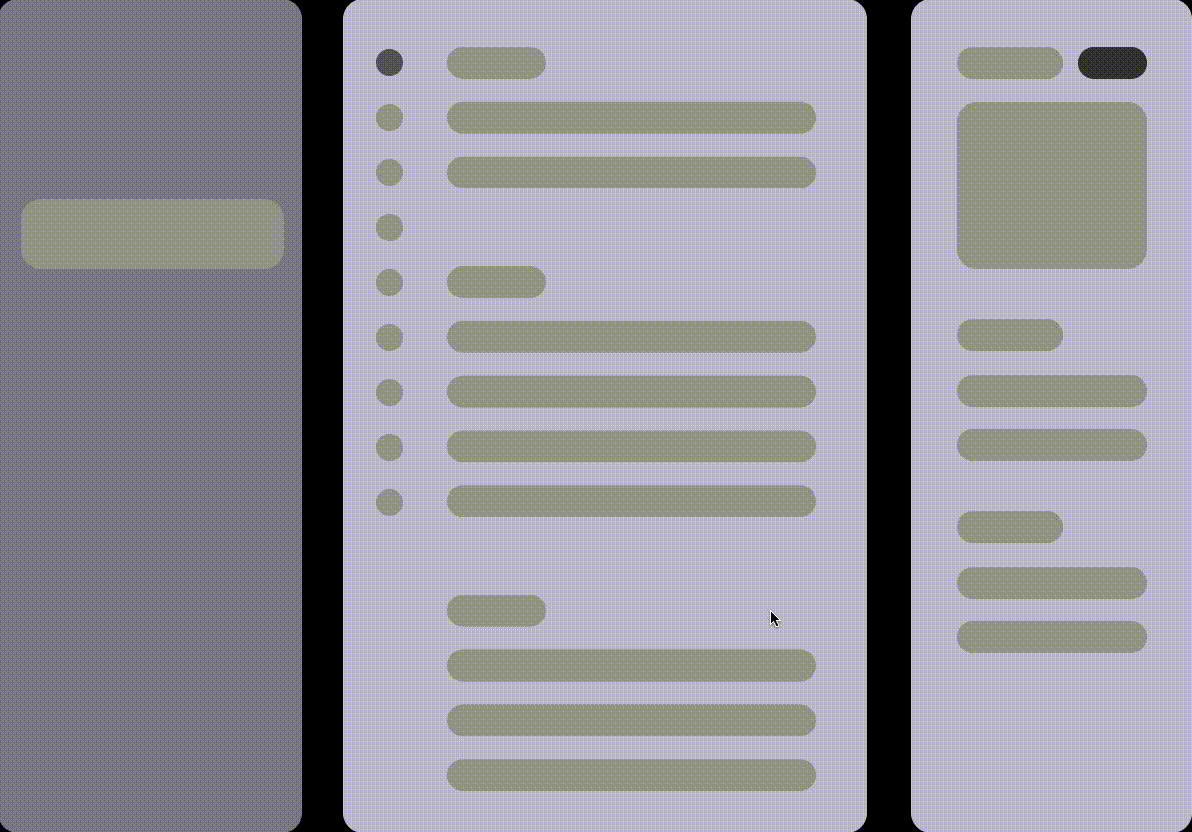
BOSCH RMI/EBR
-Product Design
Researcher & UI Designer |December 2020 - October 2021
Product Introduction
A tool platform that integrates experienced repair cases and comprehensive repair information help developed by Bosch-led for comprehensive repair shop mechanics who lack systematic repair information and abundant repair cases.
Project Objectives
Opportunity Point Exploration
Through business interviews and user interviews, we find product pain points and explore product opportunity points.
Product positioning definition
Understand the automotive aftermarket and market environment.
Define a clear product positioning based on business objectives.
User Experience Enhancement
We enhance the core user experience, creating a distinctive Bosch product that highlights its quality advantages.
Opportunity Point Exploration
Research Objectives
This study explores automotive repair service providers' experiences, digital tool usage, and unmet needs across repair stages, offering design insights for future products.
Processes and Methods
Stakeholder & Expert Interviews
We aligned on project goals, needs, and expectations through discussions with Bosch teams and Kaisi (auto parts supplier) experts, including project presentations and interviews.
Field Research
We conducted one-week visits to 11 diverse repair shops across 4 cities, observing and interviewing managers and master mechanics to uncover hidden opportunities for digital product features.





Real-Time Research Documentation
Immediate Data Processing
Interim Data Synthesis
Final Analysis & Ideation
Each interview is supported by a dedicated note-taker documenting user behavior. Key interactions (software/device usage) are photographed or recorded.
Post-interview, the team collaboratively reviews and tags recorded data, refining focus for subsequent sessions.
After each interview group, participants consolidate findings and discuss preliminary insights.
All data is synthesized to generate actionable opportunities, innovative concepts, and design recommendations.
User Journey Map

Departure
Before entering the store
In-store reception
Maintenance
Inspection
Purchasing
Delivery Estimates
Diagnosis
Target Segment Matrix
Heading 1
User Scenarios
1.0 Typical scenarios
Scenario 1: Difficult Repair Scenarios
The intermediate technician ran diagnostics and replaced relevant parts, but the issue persisted. Attempts to find similar cases via a mobile app failed due to outdated vehicle data, so the technical director was consulted. Unable to identify the source of the sound, the director contacted a colleague at the brand’s 4S shop and arranged for an expert to provide on-site support.
Scenario 2: Case Use and Accumulation Scenarios
Technicians checked the vehicle and searched saved cases on WeChat and TikTok. Due to too much content, it took time to find the right one. Even then, the case was too shallow and lacked real solutions. They turned to experts, who identified the issue after long discussions. After the repair, they wanted to document the case, but gave up because editing was too complex on current platforms.
Scenario 3: In-plant Operation and Car Owner Docking
To standardize the maintenance process, the plant management software was implemented. However, its rigid functions are mainly used for invoicing, while accessory purchases are handled on a separate platform, and manual entry for parts has made a return.
0.0 Typical Scenarios
Scenario 1: Maintenance and Skill Enhancement
An intermediate technician received the vehicle and used a universal tester to troubleshoot. After realizing it was a rare circuit issue, he requested help from the store manager. The store manager solved the issue based on experience, while the technician moved on to simpler repairs. At home, the technician tried to learn circuit knowledge but found the material too rigid and lacking clear explanations. The next time a similar issue arose, the technician again relied on the store manager or a senior worker for help.
Scene 2: Skill Showcase & Customer Acquisition
Amid the rise of online platforms like Tuhu and Tmall Auto, the store manager joins in, hoping to expand reach. However, these channels bring one-time customers with low retention. Loyal customers value the manager's technical skills, but expertise alone doesn’t attract new clients.
2.0 Typical Scenarios
Scenario 1: Owner Education & Trust Building
When complex issues arise, senior mechanics sync repair history, diagnose with tools, and explain findings—especially when contradicting 4S store results. They build trust through clear explanations, demos, and repair documentation. Insights are shared internally and uploaded to boost shop reputation.
Scenario 1: Knowledge Sharing & Skill Transfer
Intermediate repairers often seek help from senior mechanics, but unclear problem descriptions slow communication. To support growth, senior repairers share key insights and review case libraries to learn and expand influence by correcting or contributing complex cases.
Feature Presets





Product positioning
A user-friendly, content service management platform designed for comprehensive repair shops that effectively covers model maintenance information and provides growth empowerment

Precise and efficient data management positioning model
Based on mechanics' maintenance habits and pain points, the product helps to better understand and locate the problems encountered by most vehicles on the market, quickly locate and lock information, and efficiently solve vehicle problems

Comprehensive three-dimensional knowledge system modeling
Vertical establishment of a consolidation model of professional knowledge coverage from point to point, horizontal development of management and decision-making information to achieve the all-dimensional development of maintenance plant talents and help maintenance plants to maximize efficiency and benefits

Organic and quality preserved data cycle feeds the ecology
Build a more organic and high-quality content creation exchange and sharing platform, complete the accumulation of case data, realize the visualization of technology and transparency of talent for repair shops, and complete the transformation from big data accumulation to feedbacks for Bosch

1.0 Concept Design
Scenario 1: Routine Repair Scenarios
#Operational Awareness #Efficiency #Owner Interaction
-Enhance technicians’ operational awareness to quickly access routine information.
-Enable efficient multitasking for smoother daily workflows.
-Support timely and effective communication with car owners.
Scenario 2: Complex Issue Resolution
#Smart Search #Data Utilization #Expert Validation
-Fuzzy and layered search improves accuracy in locating needed information.
-Streamlined browsing and usage boost problem-solving speed.
-Expert-backed content builds trust in data reliability.
Scenario 3: Skill Growth & Owner Collaboration
#Learning Tools #Knowledge Structuring #Skill Transfer
-Tools integrated across the workflow help absorb knowledge in real-time.
-Multi-angle interpretation enhances understanding and retention.
-Knowledge networks support structured learning and skill sharing.
Global Navigation
Workspace
Centralized vehicle management
Fast data location
Parallel operation of tasks
Auto Repair Hub
Global search for information
Information in one place
Quickly locate information
Library
Content system management
Flexible permissions setting
Quick upload of cases

Interface Composition

Related content
Breadcrumbs
Global Navigation
Content Navigation
Content
Interaction Principles
Current task maximum retention

Quick switching of associated information

Main content immersion browsing

For scenario 1
WorkSpace Design
-
Streamline the search route to quickly locate and display information related to the model being repaired by the mechanic.
-
Parallel display of vehicle information, workflow does not disturb each other to achieve maximum efficiency of maintenance.

Content
WorkSpace
before

WorkSpace
after
WorkSpace Operation Flow




For Scenario 2
Maintenance material use operation
-
Related materials are linked to each other, helping users to quickly jump from one to the other to improve access efficiency.
-
Friendly interaction with the content of the material assists in the flexible presentation and absorption of knowledge.

Marketing Information
maintenance material
maintenance cases
content




For Scenario 3
Accumulation enhancement operation
-
The product is supported by tools that help users accumulate knowledge and manage existing information and knowledge through a multi-dimensional database with full coverage
-
Multiple authentication of self-generated information increases credibility and access efficiency

Qualifications
Case Professionalism Certification
Marking
empower
Expert Certification
assist
support
Marker
Notes
Case Writing
Tools
My Collection
My Profile
My History Browse
library





Focus on product direction
-
More focused content in the maintenance management section
-
More comprehensive and multi-dimensional access to maintenance information
-
More multi-linear and easy to retrace browsing paths


